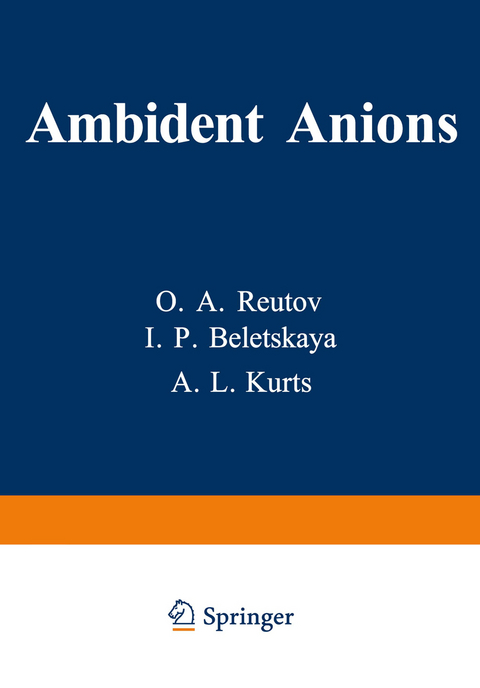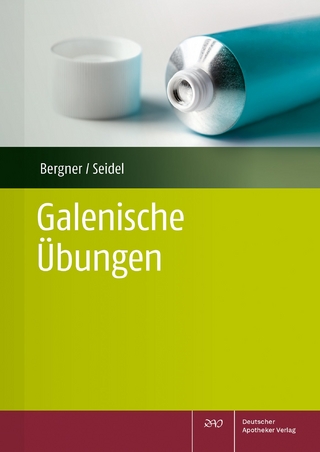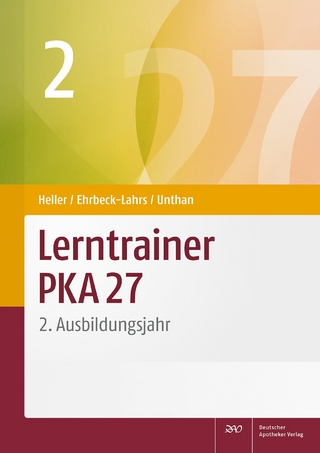
Ambident Anions
Springer-Verlag New York Inc.
978-1-4615-8584-8 (ISBN)
1. Introduction.- 1.1 Classification of Ambident Anions.- 1.2 Factors Controlling the Reactivity of Ambident Anions.- 1.3 Reaction Mechanisms Involving Ambident AnionParticipation.- 2. Enolate and Phenolate Ions.- 2.1 Structure of Alkali Enolates and Phenolates andthe Effect of the Nature of the Cation on theOrientation of Alkylation and Acylation.- 2.2 Effect of the Solvent.- 2.3 Effect of the Nature of the Electrophilic Agent.- 2.4. Acylation of Metallic Derivatives of CarbonylCompounds.- 2.5 Silylation, Germylation, and Stannylation ofMetallic Derivatives of Keto-Enol Systems.- 2.6 Effect of the Nature of the Ambident Anion.- 2.7 Stereochemistry of Enolate Ion Alkylation.- 2.8 Effect of Ionic Association on Rate and Orientationof Enolate Ion Alkylation.- 3. Nitrite Ion.- 3.1 Nitro and Nitrito Complexes.- 3.2 Alkylation of Silver Nitrite.- 3.3 Alkylation of Alkali Metal Nitrites.- 3.4 Nitrite Ion in Aromatic Nucleophilic SubstitutionReactions.- 4. Anions of Nitro Compounds.- 4.1 O-Alkylation of Salts of Nitro Compounds.- 4.2 Acylation of Salts of Nitro Compounds.- 4.3 C-Alkylation of Nitroalkane Salts.- 4.4 C-and O-Alkylation and Acylation of Salts ofPolynitro Compounds.- 5. Cyanide, Cyanate, and Thiocyanate Ions.- 5.1 Structure of Metal Cyanides, Cyanates andThiocyanates.- 5.2 Cyanide Ion.- 5.3 Thiocyanate Ion.- 5.4 Cyanate Ion.- 6. Ambident Anions of Heterocyclic Compounds.- 6.1 Effect of the Nature of the Counterion and theSolvent in Alkylation.- 6.2 Effect of the Nature of the Alkylating Agent.- 6.3 Acylation of Pyrrolyl and Indolyl Anions.- 6.4 Alkylation of 2-Pyridone and 2-HydroxypyrimidineAnions.- 7. Other Ambident Systems.- 7.1 Oximate Ion.- 7.2 Diazotate Ion.- 7.3 Sulfinate and Sulfenate Ions.- References.- 1.- 2.- 3.- 4.- 5.- 6.- 7.
| Zusatzinfo | XIV, 338 p. |
|---|---|
| Verlagsort | New York, NY |
| Sprache | englisch |
| Maße | 170 x 244 mm |
| Themenwelt | Medizin / Pharmazie ► Pflege |
| Medizin / Pharmazie ► Pharmazie ► PTA / PKA | |
| ISBN-10 | 1-4615-8584-8 / 1461585848 |
| ISBN-13 | 978-1-4615-8584-8 / 9781461585848 |
| Zustand | Neuware |
| Haben Sie eine Frage zum Produkt? |
aus dem Bereich


